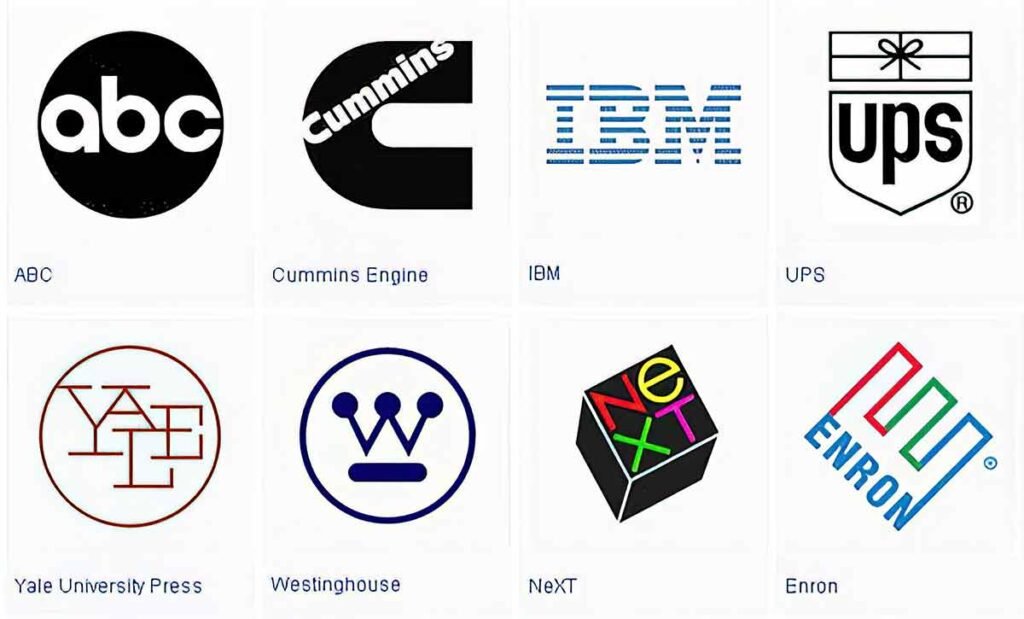Paul Rand was born Peretz Rosenbaum on August 15, 1914, in Brooklyn, New York, to Jewish immigrant parents who had fled persecution in Russia. From a young age, Paul showed a keen interest in art and design, spending hours sketching and experimenting with different artistic styles. Growing up in the bustling streets of New York City, he was exposed to a melting pot of cultures and influences, which would later shape his unique approach to logo design.
Some of his most notable works include the logos for IBM, UPS, ABC, and NeXT. Rand’s designs were characterized by their simplicity, clarity, and timeless elegance. He believed in the power of “visual communication” and emphasized the importance of a strong concept behind every design.

After graduating from high school, Paul pursued his passion for art by enrolling at the Pratt Institute, where he studied various aspects of design. Eager to further hone his skills, he continued his education at the Parsons School of Design and the Art Students League of New York, immersing himself in the vibrant art scene of the city.
In the 1930s, Paul embarked on his professional career in the world of advertising, working as a layout artist for various agencies. It was during this time that he began to develop his distinctive style, characterized by bold typography, clean lines, and striking compositions. He said: “one quickly realizes that simplicity and geometry are the languages of timelessness and universality“. His talent and innovative approach quickly caught the attention of clients and colleagues alike.
Entering Logo Design
In the early 1940s, Paul’s career reached a turning point when he started to focus on corporate branding and logo design. Armed with a deep understanding of psychology and visual communication, he set out to create logos that not only captured the essence of a company but also resonated with audiences on a profound level.

One of Paul’s most iconic creations during this period was the logo design for IBM in 1956. Inspired by the company’s commitment to innovation and progress, Paul devised a simple yet powerful design featuring bold, horizontal stripes that conveyed a sense of movement and dynamism. The logo would go on to become one of the most recognizable symbols of corporate identity in the world.
Throughout his illustrious career, Paul Rand continued to push the boundaries of design, challenging conventions and redefining the designer’s role in society. In addition to his groundbreaking work in branding, he also dedicated himself to teaching and sharing his knowledge and insights with future generations of designers.
Paul Rand and Steve Jobs
He had a significant connection with Steve Jobs, particularly during Jobs’ time at NeXT, the computer company he founded after leaving Apple in 1985. Jobs approached Rand to create the visual identity for NeXT, including the logo and branding.
When Steve Jobs was asked how it was to work with Rand, he said: ” I asked him if he would come up with a few options, and he said, “No, I will solve your problem for you and you will pay me. You don’t have to use the solution. If you want options go talk to other people.”
Rand’s contributions to the field of graphic design extended beyond his work as a designer. He was also an influential educator and author, known for his books on design theory and practice. His teachings and writings continue to inspire generations of designers around the world. Though he passed away in 1996, his legacy lives on through his timeless designs and his enduring influence on the art of visual communication.


